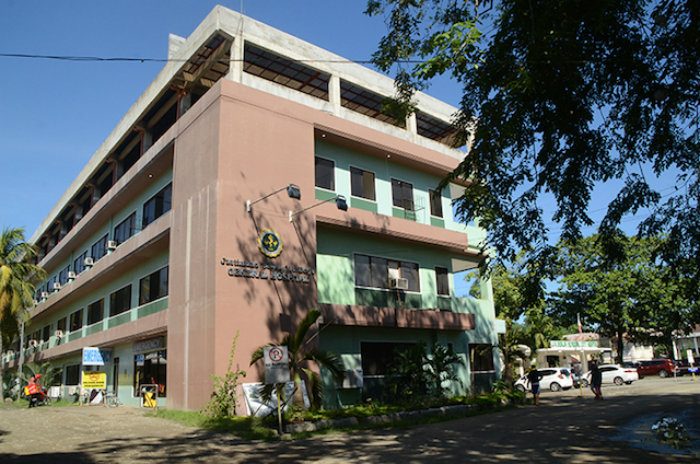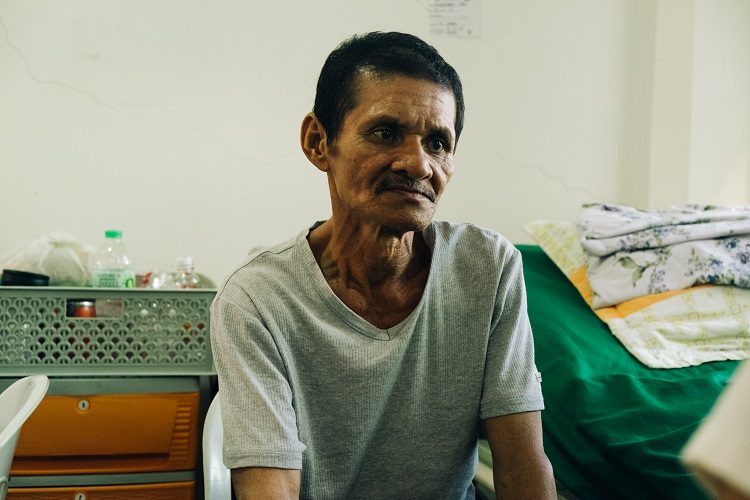SUMMARY
This is AI generated summarization, which may have errors. For context, always refer to the full article.

CAGAYAN DE ORO CITY, Philippines – Controversies have marred the Justiniano R. Borja General Hospital (JRBGH) for almost two decades – from the lack of facilities and financial resources to poor management – leaving it to operate in a dismal state.
It has been a long-standing struggle for the hospital administration to improve their services to better serve the public. But now, things are looking up for the local hospital.
“In 2013, when the Moreno administration took over, the team from his Misamis Oriental administration crafted the strategic plan for the hospital, together with key stakeholders, and came out with the vision for JRBGH becoming ‘the nation’s premier local government hospital by 2016 with preferential option for the poor and underprivileged’,” JRBGH hospital executive officer Dr. Ramon Nery said.
Fast forward to 2017, JRBGH’s key stakeholders reshaped the hospital’s earlier vision, for 2019. This was made possible with the technical assistance of Xavier University – Ateneo de Cagayan’s Governance Leadership Institute (GLI),
This revised vision for the city hospital is starting to gain traction as Nery hopes that it will become “a medical center of choice,” equipped to address complicated or tertiary-level medical cases.
The hospital’s status elevation would benefit all people in the socio-economic spectrum, particularly the poor and the marginalized.
To illustrate the vision: If a Kagay-anon has a serious or complicated condition, the patient doesn’t need to go to Cebu or Manila or abroad to get the treatment. It will be available at CDO’s Justiniano R. Borja Medical Center. (READ: CDO revives lone city govt-owned hospital)
Partnerships toward quality healthcare
The vision for the hospital may be ambitious, but Nery is optimistic that this is achievable through Public-Private Partnerships (PPPs) and the support of the Department of Health and the local health board.
This project aims to help decongest the DOH-owned Northern Mindanao Medical Center, which is also located in the city’s busy downtown.
“NMMC being a public medical center could not focus on addressing tertiary-level cases due to the influx of patients with primary and secondary cases, in the midst of the shortage of medical professionals and lack of facilities,” Nery said.
As in other parts of the country, it’s been a culture in public medical centers to try to accommodate as many patients as possible, regardless of case levels, who can’t afford the otherwise expensive treatments in private hospitals and healthcare providers.
Nery’s dream is for the city medical center to become the “primary choice for Kagay-anons” so NMMC can address more patients coming outside CDO or other parts of Region 10.
For Nery, the city’s 19 urban health centers also need to be improved, modernized, and accredited by the Philippine Health Insurance Corporation (PhilHealth) as maternal and childcare facilities or birthing homes.
The upgrading of urban health centers will help both JRBGH and NMMC to concentrate more on catering secondary, tertiary, and other complicated cases in this part of the country.
Significant changes
This visioncomes with concrete details of accomplishments and hard figures as its foundation.
“What transpired in the last 3 to 4 challenging years has been considered as ‘phenomenal’ for the JRBGH personnel. These changes have brought back the confidence that they can do more,” Nery shared.
Recently, they have opened the third floor of the Pimentel building, which has not been occupied for the past 18 years. An 8-bed capacity intensive care unit (ICU) is also being constructed while plans to build a mental health facility are underway.
Because of their additional facilities and services, the city hospital has regained the trust and support of the CDO community, particularly from the poor and the underprivileged.
Based on the hospital records, one baby is being delivered every hour daily; 8 major operations were performed (including two cesarean sections); and 250-300 consultations at the Out-Patient Department (OPD) a day.
Most wards and rooms for frontline services are airconditioned and public wifi service is provided at the OPD.
The city hospital recently hired additional 11 doctors from Xavier Ateneo’s Jose P. Rizal School of Medicine, 40 additional nurses, and 60 administrative support staff.
As Nery’s team continues to improve the operations and services of JRBGH, the city hospital is also able to generate revenue.
In the bigger picture, the city government could self-regenerate using the revenues from healthcare services, in turn, revenues raised from PhilHealth payments would be reverted right to the hospital through medicines, equipment, and more services for the people.
The management of the JRBGH has shown that with determination coupled with the passion for genuine public service, they can cater to the medical needs of the public and at the same time, contribute to the city’s growth.
In 2016, the hospital posted a total revenue of P180M and served a total of 134,418 patients from the Inpatient, Outpatient and Emergency Room departments from 39,898 in 2013.
Nery compares that what used to be the annual income of the hospital in 2013 was the hospital’s September 2016 income, worth P19M. The highest monthly income recorded last year was P23 million, in March.
In 2014, the hospital’s revenues reached P65M and P120M in 2015.
Nery recounted that when they took over in July 2013, the hospital’s annual income only amounted to P19M.
Revenues for this current year are projected to reach over P200M.
The hospital’s financing is primarily provided for by PhilHealth, Health Facilities Enhancement Program (HFEP) of the DOH, and external medical assistance programs.
“All services of the JRBGH are free of charge, from simple to complicated operations. The city hospital has effectively utilized the benefits of the government-owned insurance corporation PhilHealth, our bread and butter,” Nery said.
The free hospital services include orthopedic implants, cataract operations, anti-rabies vaccines, blood and blood products, inpatient, outpatient and take-home meds, radiology, and laboratory.
Most of the city hospital’s patients are PhilHealth members. JRBGH also facilitate the membership of those patients who are not yet covered by the program.

Sixty-year-old Hose Felesedario Palasan is one of the city hospital’s patients whose fees were shouldered by the government health program. He was involved in a motor crash two weeks prior his check-in at the hospital on June 19 for his dislocated hip bone.
He was unable to go to the city hospital immediately after the motor crash because he had no means of transportation. His leg had also swollen to the point that he couldn’t easily move it anymore.
He was only able to go to the city hospital when his sibling visited him at his home. By June 24, he had already gotten blood tests and X-ray scans of his chest and lower body. He is currently waiting for his scheduled surgery for a stainless-steel hip replacement — the purchase of which is still pending.
All of these are free of charge.
Palasan shared that he went to the city hospital because it was the only hospital that could help him without a fee.
“It was the only hospital that could help me, especially when I need the stainless [steel implant]. I can’t pay, so I went here,” he said in Binisaya.
Elelyn Ellyera, 28, is also another patient of the city hospital. She had undergone cesarian section for her first baby delivery on June 18, as per her doctor’s recommendation.
She explained that she went to the city hospital for her delivery after her local health center in Kauswagan suggested to go to JRBGH. What normally costs thousands in a private hospital was given free of charge to her by JRBGH.
By June 24, Ellyera was discharged from the hospital with her healthy baby.
Regaining the confidence of the community to the JRBGH is what Nery considers as “pamana” or legacy as he intends to retire from the helms of the hospital a few years from now.
Status elevation
For Nery, they are slowly changing the image of the city hospital, from its depressing condition to a self-sustaining entity. However, there is still a lot of work to do.
He also wants their best practices to be replicated by other local government units in the Philippines. To this end, JRBGH could serve as an archetype for other government-run hospitals.
A pioneering innovation is the Telehealth Project between JRBGH and Southern Philippines Medical Center, wherein a psychiatrist based in Davao conducts weekly consultations with patients in CDO via video conference.
Nery said that realizing this new vision of becoming a medical center is not a moonshot.
But the greater challenge lies in governance, that is why he led the formation of a team composed of key personnel of the city hospital to study the conversion and start the integration of JRBGH into the Department of Health system.
The city hospital has to apply to DOH for status elevation and accreditation, based on the classification criteria and regulations stipulated in Republic Act No. 4226 (Hospital Licensure Act).
Xavier Ateneo’s Governance and Leadership Institute serves as the intermediary in this project and facilitator for the series of workshops using the framework and principles of Kaplan and Norton’s “Balanced Scorecard.”
The JR Borja General Hospital is expected to undergo more major changes in the years to come while surpassing their recent achievements and expanding the scope of their services and operations. —Rappler.com
Stephen Pedroza, Rappler’s Lead Mover in Cagayan de Oro City, is a journalism graduate from Xavier University – Ateneo de Cagayan. He attended a course on new media in journalism at Ball State University in Muncie, Indiana.
Add a comment
How does this make you feel?
There are no comments yet. Add your comment to start the conversation.